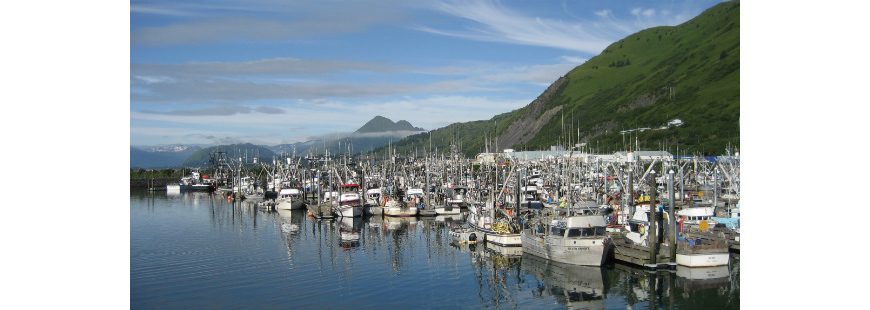Linda Behnken’s post appeared in The Hill as a Letter to the Editor on November 9, 2017. Photo: working waterfront in Alaska.
Picture this: a fish struggles on a hook, fights un-successfully to get free, and is gradually pulled to the surface. A fisherman scoops the fish out of the water and lands it with a thump on the deck of a small boat. The hook is reset — from a 32-foot commercial halibut boat, one of the 1,000 small boats that harvest halibut commercially off of Alaska each year. No palm trees sway on the beach, but the fish delivered into Alaska’s community are just as important to the local economy as the red snapper delivered into Gulf of Mexico communities.
Contrary to the image painted by a recent opin-ion piece (“Glaciers, palm trees and federal fisheries management”, Oct. 24.), the Alaska fleet is 80 percent small boats operated by fishing families who depend on access to healthy fisheries. Alaska has healthy fisheries as the result of a serious commitment to sustainable harvest across all sectors. No one harvests in Alaska without restraint, and no one considers overfishing to be “modern.”
Alaskan fisheries are proof that science-based catch limits work for all fisheries, not just commercial. We have led the way in developing management strategies scaled to the fleets managed, whether those fleets are composed of skiffs subsistence fishing for salmon in the Bering Sea or guided sport boats targeting halibut in Southeast Alaska. Harvested fish are counted, tallied and reported; management limits are set, enforced and respected. Federal managers work with tribes, state managers and fishermen to gather harvest data and monitor stocks. While no system is perfect, Alaska is actively incorporating evolving technology to improve management, rather than backtracking to failed management strategies of the past.
In short, the Gulf of Alaska and Gulf of Mexico have their differences, as do commercial and recreational fisheries around the nation. The Magnuson-Stevens Act recognizes those differences and already provides significant flexibility for regional fishery management councils to tailor management measures to the needs of their fisheries. What is not different is that all fisheries depend on healthy fish stocks, and fish stocks can only stay healthy if ALL harvesters comply with conservation mandates. A dead fish is a dead fish — whether it is caught by an Alaska small boat fisherman or a Florida recreational angler. By weakening conservation mandates in the Magnuson-Stevens Act, the Modern Fish Act would be a giant step backwards.
Sitka, Alaska


